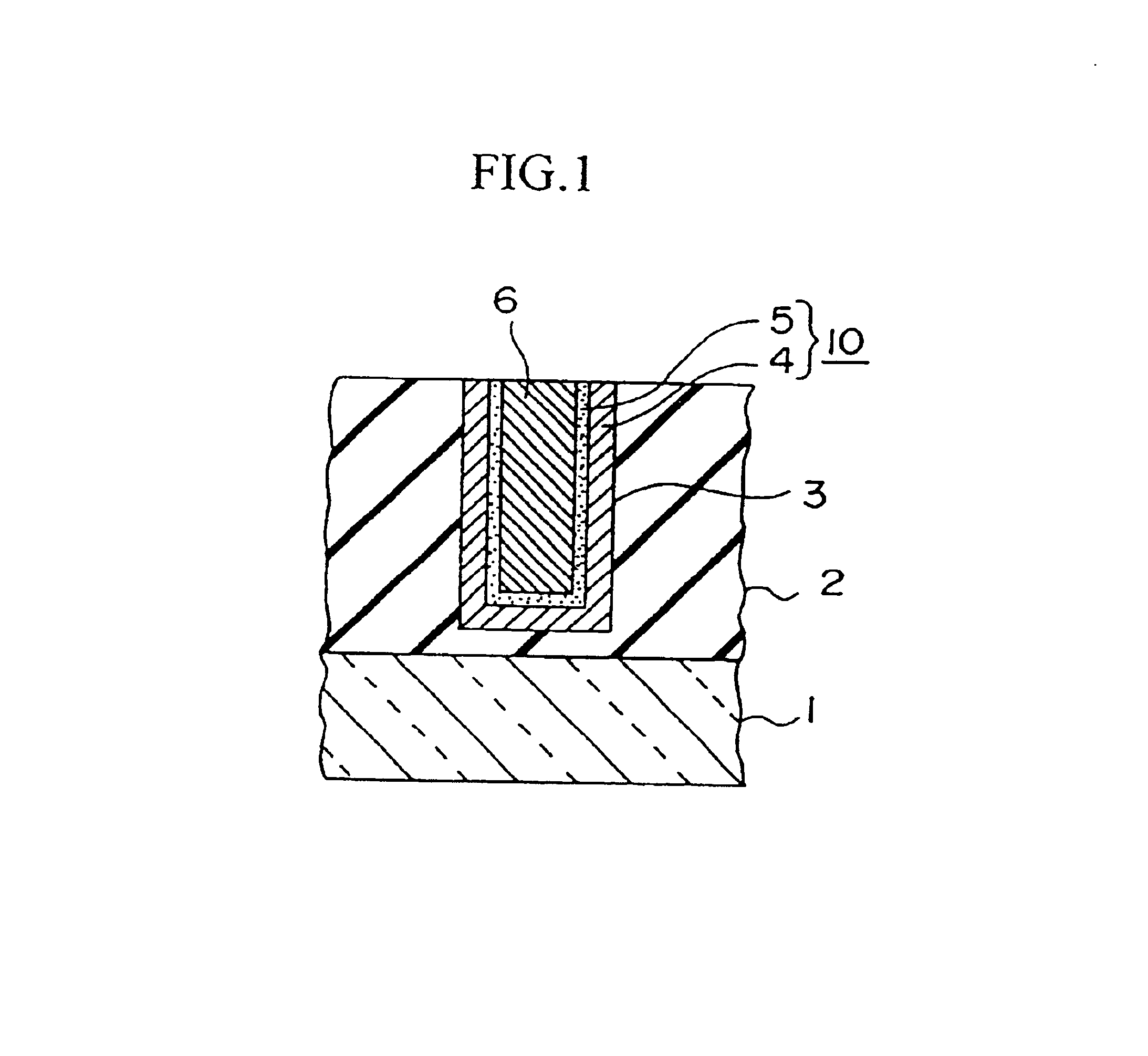Embedded electroconductive layer structure
- Summary
- Abstract
- Description
- Claims
- Application Information
AI Technical Summary
Benefits of technology
Problems solved by technology
Method used
Image
Examples
first embodiment
[0074]The first embodiment of this invention will be described below with reference to FIGS. 7A to 7E. The reaction devices which are mentioned in the embodiments of this invention are assumed to have inner volumes of 40-80 liters.
[0075]First, an SiO, layer 12 is deposited in a thickness of 600 nm by the plasma CVD method on a silicon substrate 11 having a 6-inch (about 15 cm) (100) plane 6 as a main surface thereof, a photoresist is applied thereon in a thickness of 0.6 μm and then the SiO2 layer 12 is covered with a mask of photoresist pattern formed in advance through the steps of exposure and patterning and etched along a wiring pattern by the use of an i ray (365 nm) to form a groove 13 of a width of 300 nm and a depth of 500 nm as shown in FIG. 7A.
[0076]In this case, a TEOS (tetra-ethyl-orthosilicate)-SiO2 layer, an SOG (spin-on glass) layer, or a PSG (phosphosilicate glass) layer may be used for the SiO2 layer 12. Otherwise, the SiO2 layer 12 may be formed by thermally oxidiz...
second embodiment
[0085]Now, the second embodiment of this invention will be described below with reference to FIG. 8A and FIG. 8B.
[0086]First. In the same manner as in the first embodiment, the groove 13 for wire distribution is formed in a width of 300 nm and a depth of 500 nm in the SiO2 layer 12 deposited in a thickness of 600 run on the silicon substrate 11 and a WNX layer 14a (x =0 to 1) of a thickness in the range of 10 to 30 nm, preferably 30 nm, is deposited thereon as a barrier layer by the RF sputtering method as shown in FIG. 8A.
[0087]A TaNx, layer (x =0 to 1) may be used in the place of the WN, layer 14a (x =0 to 1). This film exhibits a perfect barrier property to Cu even at such a high temperature as 800° C. (Oku et al., Collection of Manuscripts for Lectures, 30p-K-10, published at the 42nd Joint Lecture Meeting of Physicists Societies held in the spring of 1995).
[0088]Then, in the same manner as in the first embodiment, the CVD-TIN layer 15 of a thickness of 20 nm is deposited by the...
third embodiment
[0090]Now, the third embodiment of this invention will be described below with reference to FIG. 9A to FIG. 9C.
[0091]First, in the same manner as in the first embodiment, the groove 13 destined to encase a interconnection layer therein is formed in the SiO2 layer 12 deposited in a thickness of 600 nm on the silicon substrate 11 as shown in FIG. 9A. The groove 13 has a width of 300 nm and a depth of 500 nm. Subsequently, A PVD-TIN layer 14b Is deposited in a thickness in the range of 10 to 30 nm, preferably in a thickness of 30 nm, by the magnetron sputtering method.
[0092]Then, the PVD-TiN layer 14b is oxidized to form a TiN layer 14c having an oxidized surface as shown in FIG. 9B. N2 gas is supplied at a flow volume in the range of 20000 to 30000 sccm, preferably at a flow volume of 30000 sccm, and the substrate temperature is kept in the range of 400 to 500° C., preferably at 450° C. In the ambience of N2, the layer is annealed for a period in the range of 20 to 60 minutes, prefera...
PUM
| Property | Measurement | Unit |
|---|---|---|
| Concentration | aaaaa | aaaaa |
| Electrical conductor | aaaaa | aaaaa |
Abstract
Description
Claims
Application Information
 Login to View More
Login to View More - R&D
- Intellectual Property
- Life Sciences
- Materials
- Tech Scout
- Unparalleled Data Quality
- Higher Quality Content
- 60% Fewer Hallucinations
Browse by: Latest US Patents, China's latest patents, Technical Efficacy Thesaurus, Application Domain, Technology Topic, Popular Technical Reports.
© 2025 PatSnap. All rights reserved.Legal|Privacy policy|Modern Slavery Act Transparency Statement|Sitemap|About US| Contact US: help@patsnap.com



